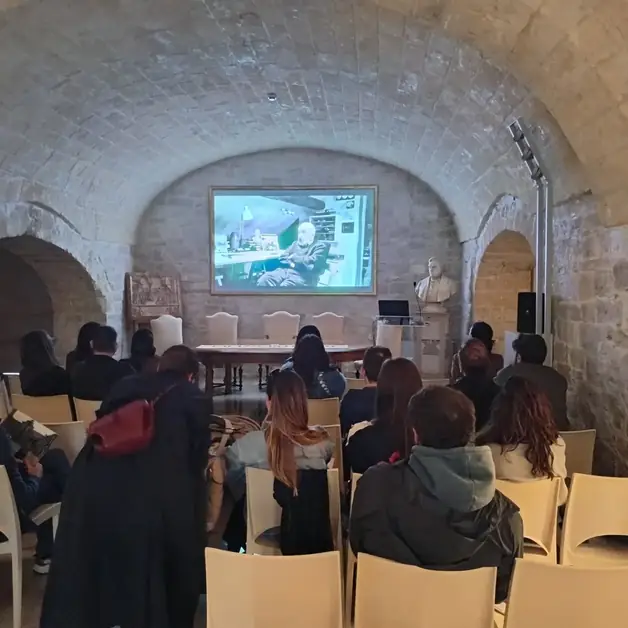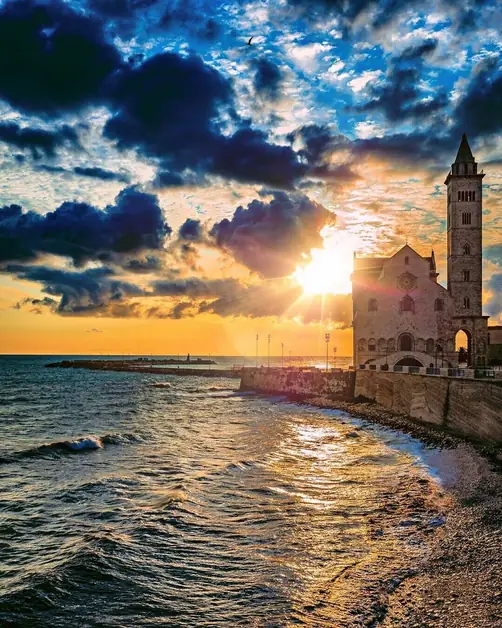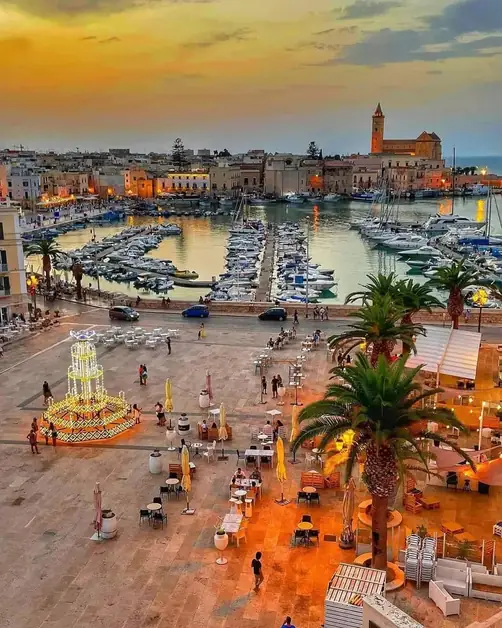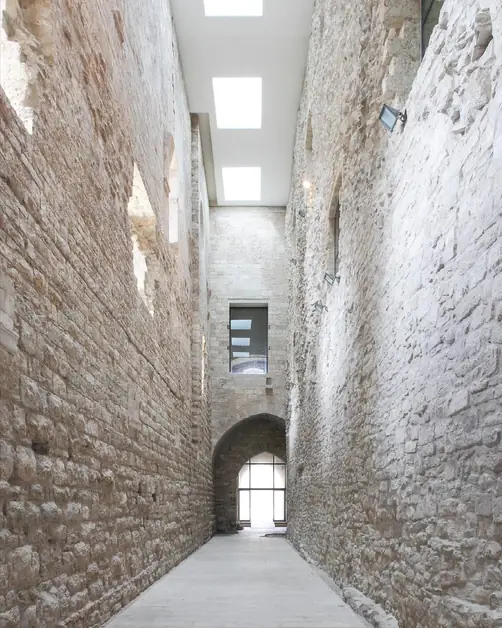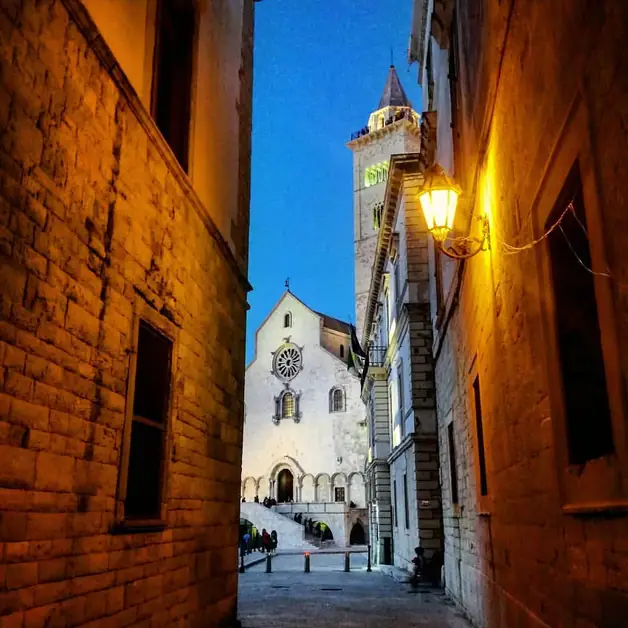The Beauty and Use of Trani Stone in Construction
Trani Stone is a precious material used in construction and art.
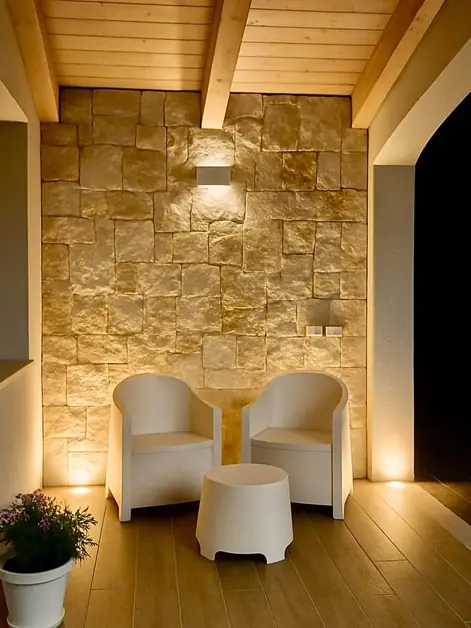
What is Trani Stone?
Trani Stone is a limestone of Italian origin, known for centuries worldwide for its beauty and durability. It is extracted in Puglia, near the city of Trani, on the Adriatic coast.
Where is Trani Stone found?
Trani Stone is extracted in Puglia, near the city of Trani, on the Adriatic coast. It is a limestone of Italian origin, known for centuries worldwide for its beauty and durability.
What material is Trani Stone made of?
Trani Stone is a carbonate rock mainly composed of calcium carbonate (CaCO₃), often dolomitized. Its structure makes it compact, durable, and capable of withstanding the elements, qualities that have made it a highly appreciated building material.
What are the aesthetic characteristics of Trani Stone?
Trani Stone is famous for its light color, ranging from white to beige with slight natural shades. This hue gives brightness to buildings and an elegant and harmonious appearance. For this reason, it has been used in significant architectural works.
In which monuments has Trani Stone been used?
One of the most famous examples is the Cathedral of Trani, built entirely with this material. The cathedral overlooks the Adriatic Sea, and the white of the stone enhances its Romanesque architecture. This monument is one of the main tourist attractions in Puglia and showcases the quality of the stone.
Why is Trani Stone so appreciated in construction?
Thanks to its resistance and durability, Trani Stone has been used for centuries in the construction of churches, palaces, stairs, and cladding. It is a material that withstands time and weather conditions, maintaining its beauty over the years.
Where is Trani Stone used today?
In addition to historical monuments, Trani Stone is used for pavements, sidewalks, squares, and gardens. It is also found in architectural elements such as door frames, stairs, skirting boards, and wall coverings. Its versatility makes it ideal for both indoor and outdoor environments.
Is Trani Stone used only in construction?
No, not only. Trani Stone is often used in artworks and decorative artifacts. Fountains, sculptures, and urban furniture are just a few examples. Due to its ease of processing, this stone lends itself well to various artistic creations.
What is Trani Rind?
In recent years, a new product called Trani Rind has been developed from the quarries of Trani. It is a raw, irregular stone split, mounted in mosaic. The result resembles ancient stone constructions, with an effect highly appreciated in modern pavements.
What is Trani Rind used for?
Trani Rind is mainly used for exteriors: gardens, sidewalks, squares, and cladding. It is similar to Trentino Porphyry but retains the light shades typical of Puglian stone. Its success has contributed to reviving the local stone industry.
What modern processing exists for Trani Stone?
From the success of Trani Rind, other products have emerged: Sliced Trani Stone, Antiqued Stone, Interior Slats, Antiqued Tiles, and various solutions for pavements and cladding. Today, the material is offered in many variants suitable for different architectural styles.
Why is Trani Stone interesting for tourists?
For those visiting Puglia, Trani Stone is not just a building material but a cultural and artistic symbol. Walking through the historic center of Trani or visiting its cathedral, tourists can see the beauty of this millenary stone, a protagonist of churches and palaces.
Where can examples of Trani Stone be admired?
In addition to Trani, the stone is present in many other Puglian locations, both in historical buildings and public spaces. Visitors to the region will notice how the light color of the stone characterizes many historic centers, giving a bright and typically Mediterranean atmosphere.
What is the connection between Trani Stone and local tradition?
The processing of Trani Stone has provided work for generations of artisans and stonecutters. Even today, in the quarries and local workshops, this tradition is passed down. Visiting the area means discovering not only a natural material but also an important part of Puglia's cultural identity.
